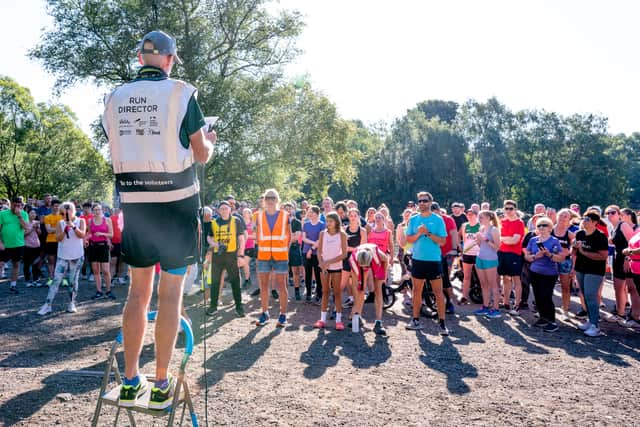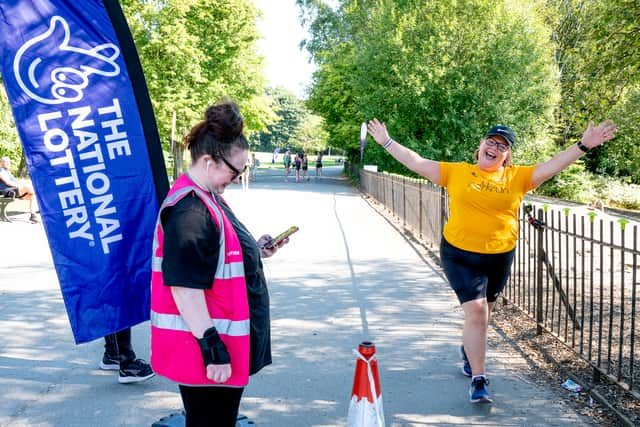How to find your nearest parkrun - where courses are and what to know for your first time
and live on Freeview channel 276
Every Saturday morning more than 350,000 people kickstart their weekends by taking part in the popular parkrun events across the UK.
These five-kilometre events are run for free by the parkrun charity and made possible by thousands of volunteers who support participants running, walking and jogging the courses.
Advertisement
Hide AdAdvertisement
Hide Adparkrun events can take place in local parks, along seafronts, in National Trust properties, by a river, in fields and many more places.
NationalWorld has all you need to know if you’re thinking of taking part in a parkrun event for the first time.
What is the nearest parkrun course to me?
There are currently over 1,000 parkrun events that take place across the UK every weekend, meaning that you are never too far away from one of the free five-kilometre events.
You can browse an interactive map of parkrun events on the charity's official website. The graphic will show courses near your location and more information about each one, such as the course and how to get there, can be found by clicking the icon. Events in England and Wales start at 9 am while those in Northern Ireland and Scotland begin at 9:30 am.
Advertisement
Hide AdAdvertisement
Hide AdParticipants often choose to do the parkrun event closest to them, referred to as their 'home parkrun', but are welcome to travel to any across the country and indeed across the world.
How do I sign up to parkrun?
Anyone wanting to take part in a parkrun should create an account on the official parkrun website before heading down on a Saturday morning.


The quick and simple registration will provide you with a log-in to browse you profile and, importantly, a barcode. This barcode can be printed out or saved on your mobile device - some even choose to purchase wristbands or tags to always have it handy.
When you cross the line at the event, you are given a finish token. Volunteers are then on hand to scan and reclaim that token, along with your unique barcode.
Advertisement
Hide AdAdvertisement
Hide AdParticipants who complete a parkrun event get given a time and can record their completed courses and achievements on their account. After completing 25, 50, 250 and 500 events, milestone t-shirts are also unlocked for parkrunners to buy.
What do I need to wear and take to parkrun - and how fast do you have to be?
To take part in parkrun, participants should wear whatever is most comfortable to complete the five-kilometre course. There is no strict dress code and no need for short shorts or lycre if you aren't suited and booted with specialist kit.
You need very little to take part in the events but you do need to take along your barcode, which is obtained through registration. It may also be an idea to take a water bottle, especially on a warm day.


parkrun is very clear that events are not a competition and participants are encouraged to run, walk or jog as they please.
Advertisement
Hide AdAdvertisement
Hide AdIt is common to see parents enjoying the events with younger family members, people with dogs on short handheld leads and even some pushing a buggy around the five-kilometre course. All events feature a tailwalker to make sure no-one gets left behind and, for those wanting to run quickly, there are often pacers to help target times.
A wide range of abilities and ages take part in the events. Children must be over the age of four to take part in parkrun and any under the age of 11 must stay within arm's reach of a parent or guardian.
Comment Guidelines
National World encourages reader discussion on our stories. User feedback, insights and back-and-forth exchanges add a rich layer of context to reporting. Please review our Community Guidelines before commenting.